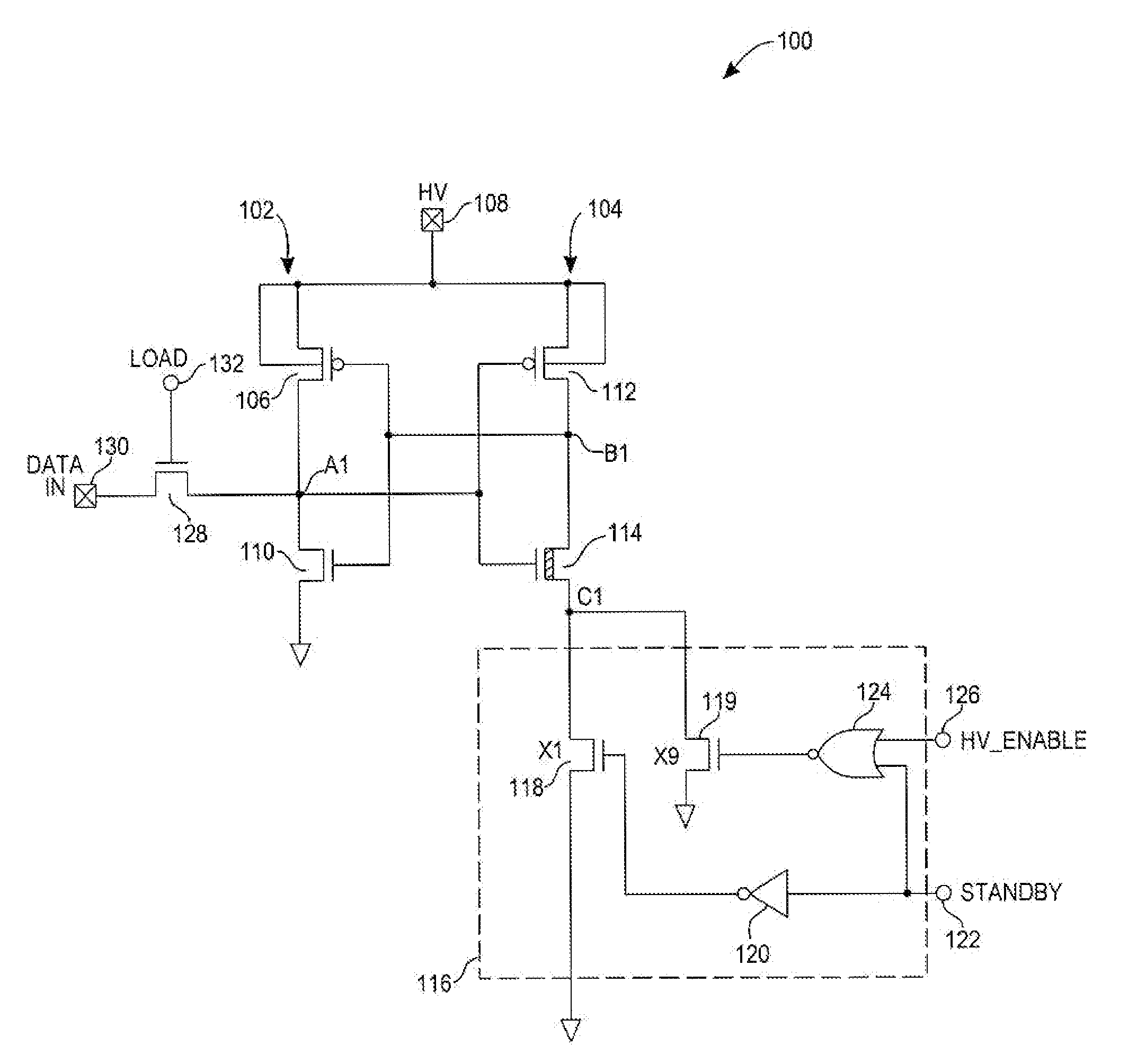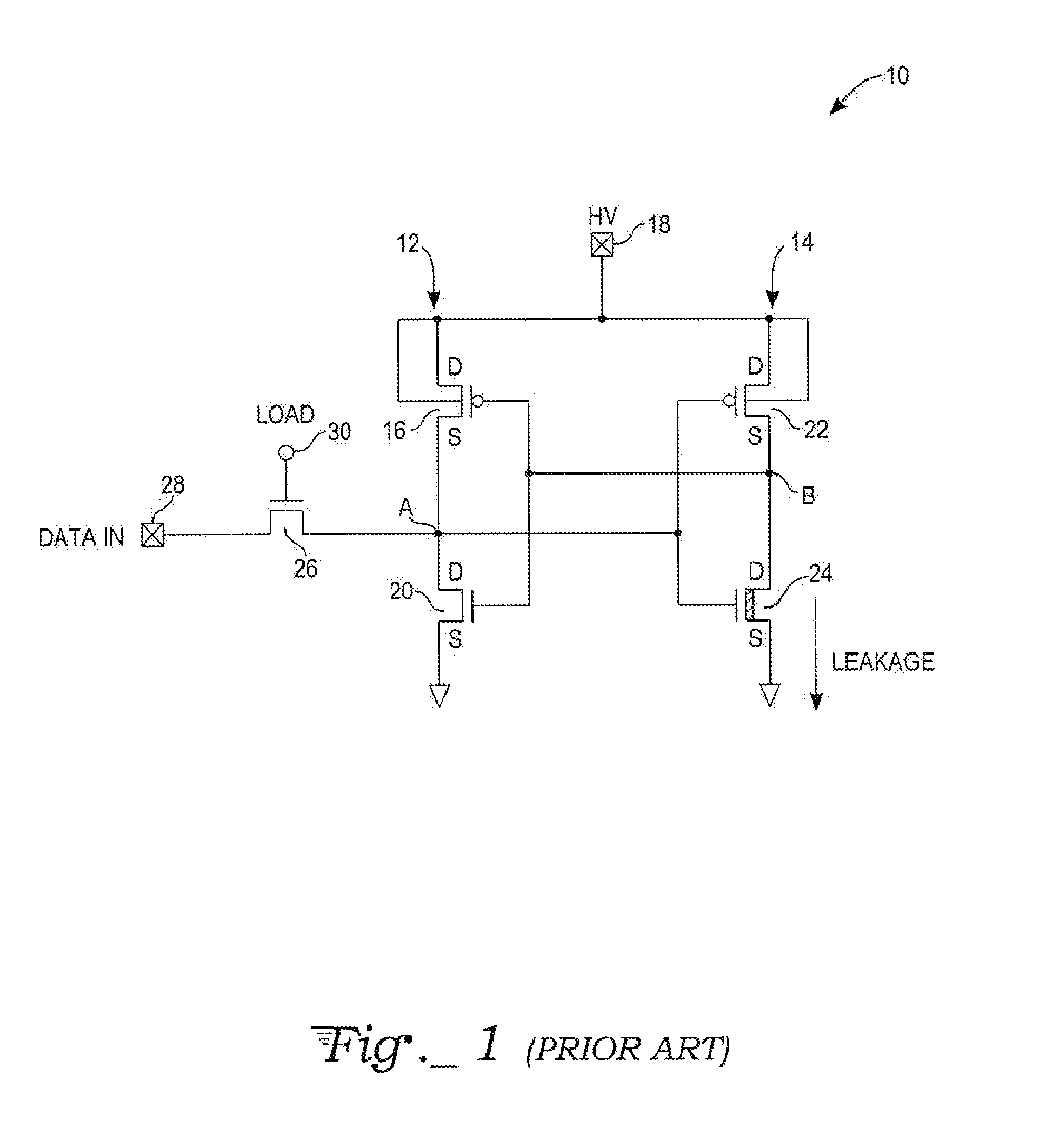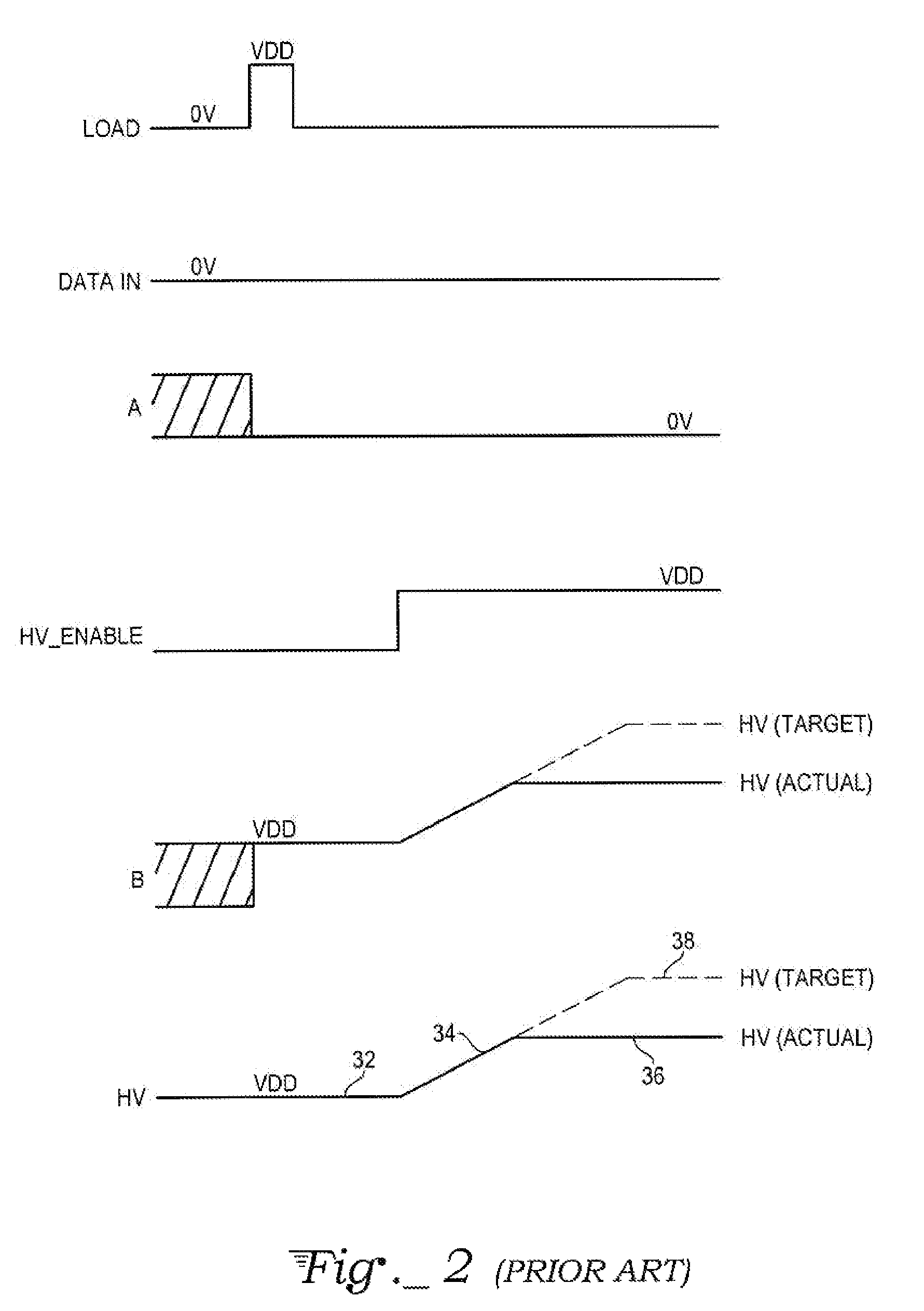Method and apparatus to prevent high voltage supply degradation for high-voltage latches of a non-volatile memory
a non-volatile memory and latch technology, applied in static storage, digital storage, instruments, etc., can solve the problems of affecting low-voltage operation, increasing threshold voltage vt, and limited current capability of high-voltage generators, and achieve high impedance and prevent leakage current
- Summary
- Abstract
- Description
- Claims
- Application Information
AI Technical Summary
Benefits of technology
Problems solved by technology
Method used
Image
Examples
first embodiment
of the Invention
[0033]FIG. 3 is a circuit diagram of a first embodiment of a high voltage latch circuit 100 that includes a first CMOS inverter circuit 102 and a second CMOS inverter circuit 104. The first CMOS inverter circuit 102 includes a first pull-up PMOS transistor 106 that has a drain connected to a HV node 108 and a source connected to a latch input node A1. The first CMOS inverter circuit 102 also includes a first pull-down NMOS transistor 110 that has a drain connected to the latch input node A1 and a source connected to ground. The gates of the first pull-up PMOS transistor 106 and the first pull-down NMOS transistor 110 are connected together.
[0034]The second CMOS inverter circuit 104 includes a second pull-up PMOS transistor 112 that has a drain connected to the HV node 108 and a source connected to a data storage output node B1. The second CMOS inverter circuit 104 includes a second NMOS pull-down transistor 114 that has a drain connected to the data storage output no...
second embodiment
of the Invention
[0045]FIG. 5 is a circuit diagram of a second embodiment of a high voltage latch circuit 200, where components similar to those of FIG. 3 have the same reference characters, such as the first CMOS inverter circuit 102 and the second CMOS inverter circuit 104. The first CMOS inverter circuit 102 includes the first pull-up PMOS transistor 106 that has a drain connected to the HV node 108 and a source connected to a latch input node A2. The first CMOS inverter circuit 102 also includes the first pull-down NMOS transistor 110 that has a drain connected to the latch input node A2 and a source connected to ground. The gates of the first pull-up PMOS transistor 106 and the pull-down NMOS transistor 110 are connected together.
[0046]The second CMOS inverter circuit 104 includes a second pull-up PMOS transistor 112 that has a drain connected to the HV node 108 and a source connected to a data storage output node B2. The second CMOS inverter circuit 104 includes a second pull-d...
third embodiment
of the Invention
[0055]FIG. 6 is a circuit diagram of a third embodiment of a high voltage latch circuit 300, where similar components have the same reference characters, such as the first CMOS inverter circuit 102 and the second CMOS inverter circuit 104. The first CMOS inverter circuit 102 includes a first pull-up PMOS transistor 106 that has a drain connected to a HV node 108 and a source connected to a latch input node A3. The first CMOS inverter circuit 102 also includes a first pull-down NMOS transistor 110 that has a drain connected to the latch input node A3 and a source connected to ground. The gates of the first pull-up PMOS transistor 106 and the first pull-down NMOS transistor 110 are connected together.
[0056]The second CMOS inverter circuit 104 includes a second pull-up PMOS transistor 112 that has a drain connected to the HV node 108 and a source connected to a data storage output node B3. The second CMOS inverter circuit 104 includes a second pull-down NMOS transistor ...
PUM
 Login to View More
Login to View More Abstract
Description
Claims
Application Information
 Login to View More
Login to View More - R&D
- Intellectual Property
- Life Sciences
- Materials
- Tech Scout
- Unparalleled Data Quality
- Higher Quality Content
- 60% Fewer Hallucinations
Browse by: Latest US Patents, China's latest patents, Technical Efficacy Thesaurus, Application Domain, Technology Topic, Popular Technical Reports.
© 2025 PatSnap. All rights reserved.Legal|Privacy policy|Modern Slavery Act Transparency Statement|Sitemap|About US| Contact US: help@patsnap.com



